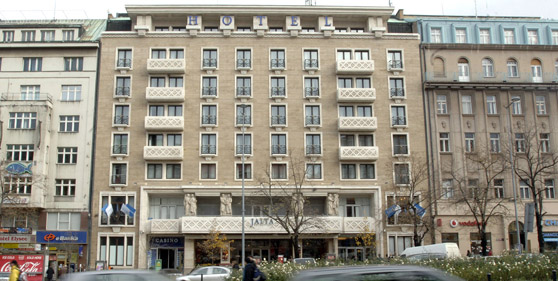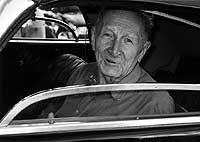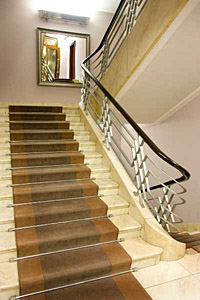
The Prague Hotel Jalta welcomed its first guests fifty years ago
 |
Despite its relative youth, the hotel is a cultural monument and is also listed as part of the UNESCO World Heritage in the historical center of Prague. It is regarded as the most valuable architectural realization of the 1950s - socialist realism.
Hotel Jalta is among the best that emerged during the era of so-called sorel. In terms of style, it leans more towards the decorative art of the 1920s rather than copying the Soviet realism of that time, as seen in the Hotel Internacionál, which is also a cultural heritage site today.
The original and cultivated appearance of the hotel was crafted by architect Antonín Tenzer (December 22, 1908 - October 12, 2002), a leading figure in Czech functionalism. His other works include, for example, a health center in Prague - Vysočany, a children's hospital in Motol, and terrace houses in Prague - Libeň.
 |
| Antonín Tenzer |
The façade of the seven-story building captivates with its sobriety and travertine cladding. President Zápotocký, a trained stonemason, also contributed to the stone selection, choosing the highest quality - marble and travertine. Balconies with heavy decorative railings protrude from the façade. The loggia on the first floor is adorned with pillars depicted as a pair of figures with scenes from the lives of farmers, designed by Jan Jiřikovský. Today, it is said to be an attractive sight for tourists.
Inside, the representative space of the ground floor is striking, featuring an impressive staircase leading from the congress floor down to the restaurant. The coffered glazed ceilings and the intricately carved circular wooden staircase by sculptor Václav Markup are also attention grabbers, freely inserted into the dining area. Artist Stanislav Libenský designed etched glass with figurative motifs for the hotel as window fillings in the restaurant and glass reliefs as parts of lighting in the wine bar. The originals included ceramic cladding of the columns, but also textiles and carpets. Thus, the budget soared to 40 million crowns - in today’s prices, that would amount to about 750 million crowns.
 |
The hotel was intended for prominent guests - communist leaders, statesmen, and politicians from the socialist camp as well as from the West; important businessmen and wealthy tourists also stayed here. Therefore, it was in the spotlight of the State Security, and its walls were riddled with wiretaps and cameras. The criminal police also turned up here. In the renowned Jalta bar, known from the film "Světáci," speculators gathered, and various paid companions were likely swarming around foreigners then as they possibly still do today.
Today, the hotel, owned by Flow East, which has hosted celebrities such as the Dalai Lama and American actor Bruce Willis, offers its guests four-star luxury in 94 rooms. It also carries on the traditions of social events, providing space for business meetings, press conferences, receptions, as well as fashion shows, auctions, and celebrations and cocktail parties.
The English translation is powered by AI tool. Switch to Czech to view the original text source.
0 comments
add comment
Related articles
0
02.06.2018 | Hotel Jalta, an architectural gem of Wenceslas Square, celebrates its 60th anniversary
0
31.05.2018 | <html>Před šedesáti lety byl otevřen pražský hotel Jalta</html>
<html>Sixty years ago, the Prague hotel Jalta was opened</html>
0
29.11.2013 | Under the Jalta hotel, a Cold War museum has opened
0
22.12.2008 | <p>100 years ago, architect Antonín Tenzer was born.</p>






